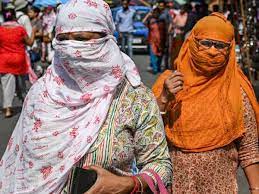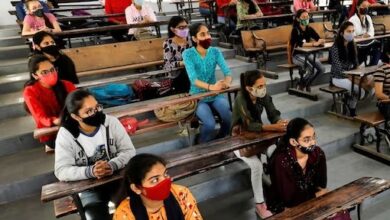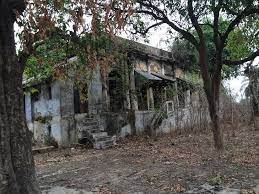Climate Change Has Made the UP Heat Wave At Least Two Times More Likely, Research Shows
An research employing a statistic called the Climate Shift Index (CSI) reveals that climate change at least quadrupled the likelihood of the current heat wave in Uttar Pradesh that caused several hospitalisations in the state.
CSI is a tool that calculates the amount of climate change that affects daily temperatures. It was created by Climate Central, a non-profit organisation of scientists and communicators with offices in the US.
Up till Monday, 68 people passed away at the Ballia district hospital in Uttar Pradesh under a brutal heat wave. Only two individuals, according to officials, passed away from heat stroke. According to media sources, casualties due to the severe heat were also reported in the nearby Deoria area.
Climate Central researchers used CSI to evaluate how often and how much temperatures have deviated from the historical average in their investigation. A higher index denotes a more significant shift from the past.
Climate change is indicated by CSI values higher than 1. Levels between two and five indicate that the likelihood of such temperatures increased by a factor of two to five due to climate change.
According to the data, certain areas of Uttar Pradesh saw temperatures that have at least tripled in likelihood as a result of climate change, or CSI levels of three.
According to new data, human-caused climate change increased the likelihood of a three-day intense heat event across Uttar Pradesh from June 14–16 by at least two times, according to experts at Climate Central.
They said that the intensity of the incident was a result of the combination of very high temperatures and excessive humidity.
“We repeatedly observe that heat waves, one of the worst weather occurrences in existence, are becoming both more frequent and more intense as a result of climate change. This has been acknowledged in India, according to our most recent World Weather Attribution (WWA) research, but heat mitigation strategies are not being implemented quickly enough.
“It needs to be an absolute priority adaptation action everywhere,” said Friederike Otto, co-chair of WWA, a group of worldwide specialists who research the impact of climate change on severe weather events.
Thirteen people lost their life in April during a gathering in Navi Mumbai’s Kharghar due to heat and prolonged sun exposure.
According to medical professionals, heat stroke happens when the body’s temperature control mechanism malfunctions and it overheats.
A extremely high body temperature, quick breathing, rapid heartbeat, disturbed mental status, and sometimes dry skin or no perspiration are common symptoms. However, since these signs might also appear in other medical conditions, it can be difficult to determine the exact cause of death from heat stroke.
In the absence of any rain-producing weather systems, heatwave conditions persisted for roughly 10 days in east Uttar Pradesh, east Madhya Pradesh, Bihar, and Chhattisgarh and for roughly 12 days in Odisha, Jharkhand, Telangana, and north coastal Andhra Pradesh.
When a station’s highest temperature exceeds 40 degrees Celsius in the plains, 37 degrees Celsius along the coast, and 30 degrees Celsius in mountainous areas, and the difference from normal is at least 4.5 degrees Celsius, a heatwave is proclaimed.
The main form of government reaction to both economically harmful and potentially fatal heat waves is heat action plans. To lessen the effects of heat waves, they recommend a number of activities, disaster responses, and post-heatwave reaction measures.
“The combination of extreme heat and humidity is particularly dangerous for humans, even more so in urban contexts where the heat island effect can further increase temperatures,” said Mariam Zachariah, a researcher at Imperial College London and WWA. The frequency and severity of these potentially fatal episodes will increase unless carbon emissions are drastically decreased.
According to a research released by the IMD in May, most of India would see a rise of 12–18 days in the length of heat waves by 2060.
According to a research written by scientists Kamaljit Ray, S S Ray, R K Giri, and A P Dimri, as well as M Rajeevan, a former secretary of the Ministry of Earth Sciences, more than 17,000 lives were lost in India due to heatwaves over the course of 50 years.
According to a research written in 2021, India registered 706 heatwave occurrences between 1971 and 2019.
A key climatic danger for South Asian nations, according to the Fifth Assessment Report of the Intergovernmental Panel on Climate Change, is the increased death rate from heat waves.
According to the paper, if preventative and reactive measures are not adopted, a little increase in average temperature or a modest lengthening of heatwaves might cause a considerable rise in death rates in India.
On a national level, India has not yet formally declared heat waves as a natural catastrophe. Extremely hot spells may have a huge effect on human health, but research has also shown that many crops can experience reproductive failure and output reductions that are severe.
A McKinsey Global Institute survey states that roughly 75% of Indian employees face stress linked to the heat. According to the analysis, by 2030, the nation might lose 2.5% to 4.50% of its Gross Domestic Product annually if this trend continues.
The warmest February since records started to be kept in 1901 occurred in 2023 in ndia, which has been experiencing record-breaking temperatures. It was the third hottest and wettest March in 121 years in 2022. The third-warmest April in the nation since 1901 also occurred in this year.







